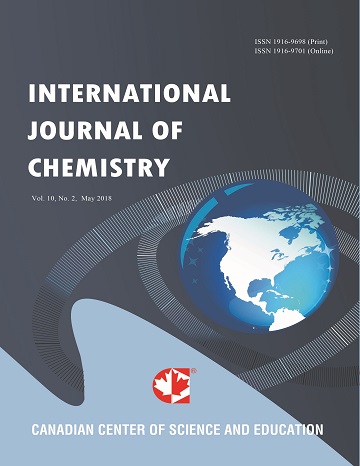Chemical Analysis of Rock and Water from dug Wells in a Residential Area in Lagos State, Nigeria
- Mopelola Omotoso
- Ibrahim Amoo
Abstract
Samples of rock deposit dug out from wells at Alimosho local government in Lagos state, Nigeria were characterized for chemical composition and ultimate utilization. Fourier Transform Infrared Spectroscopy (FTIR), X-Ray diffraction (XRD) and Atomic Absorption Spectroscopy (AAS) were used to identify the rock as a mixed clay rock containing 35.04% Illite, 25.64% Illite plus Quartz, 22.20% Kaolinite and 17.09% Feldspar. This was corroborated by cation determination that showed the rock to be predominantly clayey rock.
The mean concentrations of lead and copper in water of the wells in the rock location are 0.004mg/L and 0.05mg/L respectively while cadmium is less than detectable limit. The well water in the area studied is therefore not contaminated by these heavy metals.
Heavy metals removal by the mixed clay from polluted underground water was studied using AAS. A general increase of sorption was observed with increase in the adsorbent dosage. 20g of the rock adsorbed a higher percentage of copper (80.23%) than lead and cadmium that were 70.25% and 65.83% respectively. The percentage of heavy metals adsorbed confirms the use of mixed clay minerals as a contaminants removal from the underground polluted water. The rock adsorbed copper readily than cadmium and lead. The maximum amount of lead removed from the contaminated underground water of the defunct battery site across the adsorbent dosage (5g, 10g, 15g and 20g) were 1.20mg/L, 3.19mg/L, 3.69mg/L and 4.09mg/L respectively indicating the effect of increase in adsorbent dosage in remediating the lead contaminated water. This data showed that the rock can be used to remove these heavy metals from contaminated water.
- Full Text:
 PDF
PDF
- DOI:10.5539/ijc.v7n2p122
Index
Contact
- Albert JohnEditorial Assistant
- ijc@ccsenet.org
